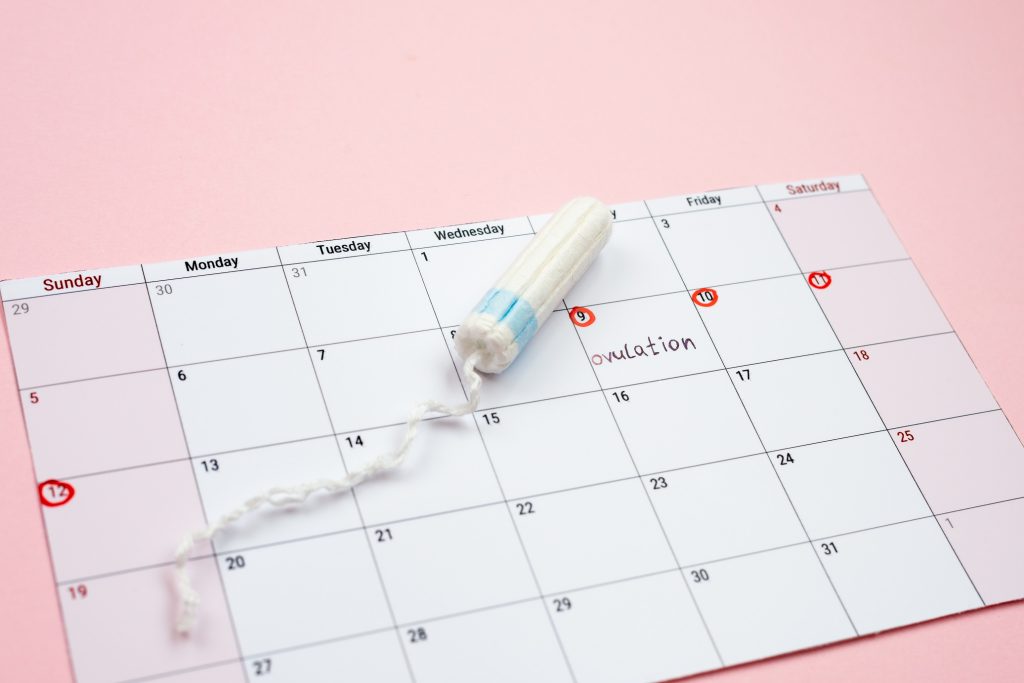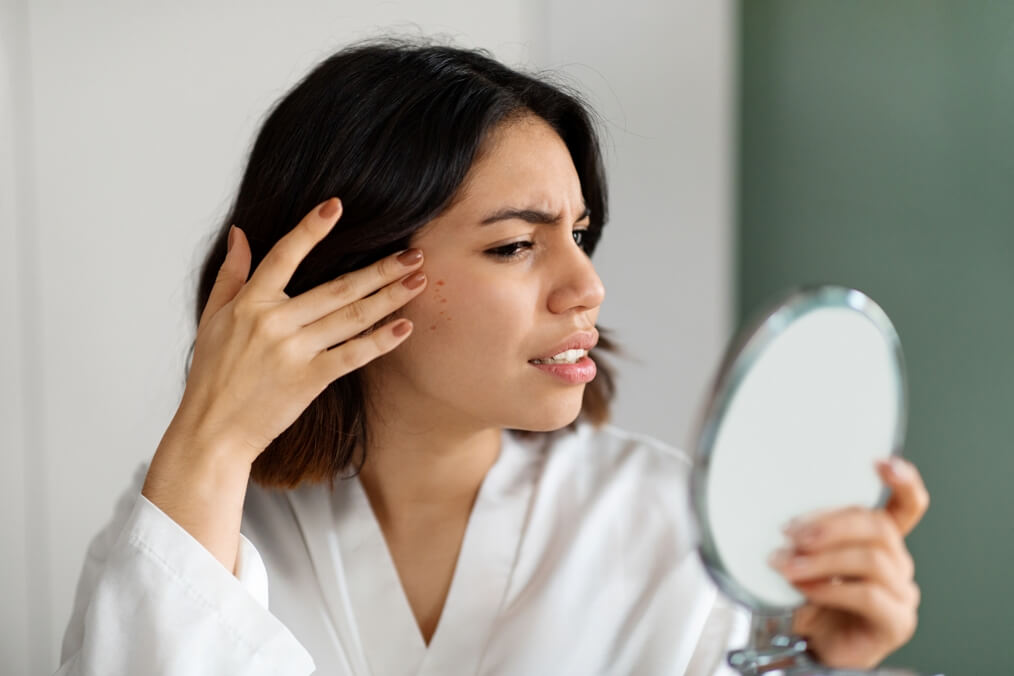Acne When Ovulating: Introduction
Are you tired of dealing with pesky acne breakouts that seem to crop up every time you’re ovulating? You’re not alone. Many women experience this frustrating phenomenon, and it can be a major confidence killer. But fear not, because in this article, we’ll delve into the causes of acne breakouts when ovulating and provide you with effective solutions to banish those blemishes for good. Hormonal fluctuations play a significant role in triggering acne during the ovulation period.
As your body prepares for potential pregnancy, estrogen levels drop, while progesterone levels rise. This hormonal imbalance can lead to increased sebum production, clogged pores, and ultimately, those unwelcome breakouts. But fret not, as we’ll share practical tips and skincare routines to help you combat these hormonal hiccups and maintain clear, radiant skin throughout your menstrual cycle. So, let’s dive in and discover the secrets to understanding and conquering acne breakouts when ovulating once and for all.
Understanding the Menstrual Cycle and Its Effects on the Skin

To understand why acne breakouts occur during ovulation, it’s essential to comprehend the menstrual cycle and its impact on the skin. The menstrual cycle is a complex process that occurs in women of reproductive age, typically lasting around 28 days. It involves various hormonal changes that prepare the body for potential pregnancy.
During the menstrual cycle, the levels of estrogen and progesterone, two essential hormones, fluctuate. Estrogen is responsible for maintaining healthy skin by regulating oil production, while progesterone helps thicken the uterine lining in preparation for pregnancy. These hormones work together to create a delicate balance in the body.
Hormonal Changes During Ovulation
Ovulation is a crucial phase of the menstrual cycle when a mature egg is released from the ovaries. It usually occurs around the 14th day of the cycle, but can vary from woman to woman. During ovulation, hormonal changes take place, which can have a profound impact on the skin.
As your body prepares for potential pregnancy, estrogen levels drop, while progesterone levels rise. This hormonal imbalance can lead to increased sebum production, clogged pores, and ultimately, those unwelcome breakouts. The excess sebum, along with dead skin cells and bacteria, can cause inflammation and result in acne.
How Hormones Contribute to Acne Breakouts
Hormonal fluctuations during ovulation can disrupt the natural balance of the skin, leading to acne breakouts. When sebum production increases, it can clog the hair follicles, creating an ideal environment for bacteria to thrive. This can result in inflammation, redness, and the formation of pimples.
Additionally, the rise in progesterone levels can stimulate the production of keratin, a protein that can block the pores and further contribute to the development of acne. Hormonal acne tends to appear in the form of deep, painful cysts, often concentrated around the chin, jawline, and cheeks.
Common Causes of Acne Breakouts During Ovulation

While hormonal fluctuations are the primary cause of acne breakouts during ovulation, several other factors can contribute to their occurrence. These include:
1. Stress: High levels of stress can exacerbate hormonal imbalances and trigger breakouts.
2. Diet: Consuming excessive amounts of sugary foods, dairy products, or processed foods can worsen acne symptoms.
3. Lack of sleep: Inadequate sleep can disrupt hormone regulation and lead to increased sebum production.
4. Poor skincare routine: Failing to cleanse and moisturize the skin properly can contribute to clogged pores and acne formation.
Tips for Preventing and Managing Acne Breakouts
While it may be challenging to completely prevent acne breakouts during ovulation, there are several tips and lifestyle changes you can incorporate into your routine to help manage and reduce their occurrence:
1. Maintain a healthy diet: Opt for a balanced diet rich in fruits, vegetables, whole grains, and lean proteins. Avoid sugary foods, dairy products, and processed foods.
2. Practice stress management techniques: Engage in activities such as exercise, meditation, or yoga to reduce stress levels and promote hormonal balance.
3. Get enough sleep: Aim for 7-9 hours of quality sleep each night to support overall well-being and hormone regulation.
4. Establish a consistent skincare routine: Cleanse your face twice a day with a gentle cleanser, exfoliate regularly to remove dead skin cells, and moisturize with a non-comedogenic product.
5. Avoid touching your face: Touching your face can transfer bacteria and oils from your hands, leading to clogged pores and breakouts.
6. Use non-comedogenic makeup: Opt for makeup products labeled “non-comedogenic” to minimize pore clogging and prevent breakouts.
Skincare Routine for Acne-Prone Skin During Ovulation
Taking care of your skin during ovulation is crucial to manage and prevent acne breakouts. Here’s a skincare routine specifically tailored for acne-prone skin during this time:
1. Cleanse your face with a gentle cleanser in the morning and evening.
2. Apply a toner with acne-fighting ingredients, such as salicylic acid or tea tree oil, to remove excess oil and unclog pores.
3. Use a lightweight, oil-free moisturizer to hydrate the skin without adding unnecessary oils.
4. Apply a spot treatment containing benzoyl peroxide or sulfur directly on active breakouts.
5. Use a clay mask once or twice a week to absorb excess oil and draw out impurities.
6. Don’t forget to wear sunscreen with at least SPF 30, as some acne treatments can increase the skin’s sensitivity to the sun.
Natural Remedies for Treating Acne Breakouts
If you prefer natural remedies, several ingredients can help soothe and treat acne breakouts during ovulation:
1. Tea tree oil: Known for its antibacterial properties, tea tree oil can help reduce inflammation and kill acne-causing bacteria. Dilute it with a carrier oil before applying it to the skin.
2. Aloe vera: Apply aloe vera gel directly to the affected areas to soothe inflammation and promote healing.
3. Honey: With its antibacterial and anti-inflammatory properties, honey can help reduce redness and inflammation. Apply a thin layer of raw honey to the skin and leave it on for 10-15 minutes before rinsing off.
4. Witch hazel: Use witch hazel as a natural toner to help control oil production and reduce inflammation.
Over-the-Counter and Prescription Treatments for Hormonal Acne
In addition to lifestyle changes and natural remedies, several over-the-counter and prescription treatments can effectively manage hormonal acne:
1. Topical retinoids: These vitamin A derivatives can unclog pores, promote cell turnover, and reduce acne lesions. Look for products containing adapalene or tretinoin.
2. Benzoyl peroxide: This ingredient kills bacteria and reduces inflammation. It’s available in various strengths, from 2.5% to 10%.
3. Oral contraceptives: Birth control pills containing estrogen and progestin can help regulate hormone levels and reduce acne breakouts.
4. Spironolactone: This prescription medication blocks the effects of androgens, hormones that can trigger acne. It’s often prescribed for hormonal acne in women.
5. Isotretinoin: Reserved for severe cases of acne, isotretinoin is a potent oral medication that reduces oil production and eliminates acne-causing bacteria.
When to Seek Professional Help for Acne Breakouts During Ovulation
If your acne breakouts during ovulation persist despite lifestyle changes and over-the-counter treatments, it may be time to seek professional help. A dermatologist can assess your specific situation and recommend appropriate treatments tailored to your needs. They may suggest prescription medications, such as oral contraceptives or isotretinoin, or perform procedures like chemical peels or laser therapy.
Conclusion
Acne breakouts during ovulation can be frustrating, but with the right knowledge and skincare routine, you can effectively manage and reduce their occurrence. By understanding the hormonal changes that take place during ovulation and implementing lifestyle changes, such as maintaining a healthy diet, managing stress levels, and following a consistent skincare routine, you can regain control over your skin. Remember, if your acne persists or worsens, consult a dermatologist for personalized advice and treatment options. With perseverance and the right approach, you can conquer acne breakouts when ovulating and maintain clear, radiant skin throughout your menstrual cycle.
Sources:
– American Academy of Dermatology Association. (n.d.). Acne. Retrieved from https://www.aad.org/public/diseases/acne
– Mayo Clinic. (2019, March 13). Acne. Retrieved from https://www.mayoclinic.org/diseases-conditions/acne/symptoms-causes/syc-20368047
